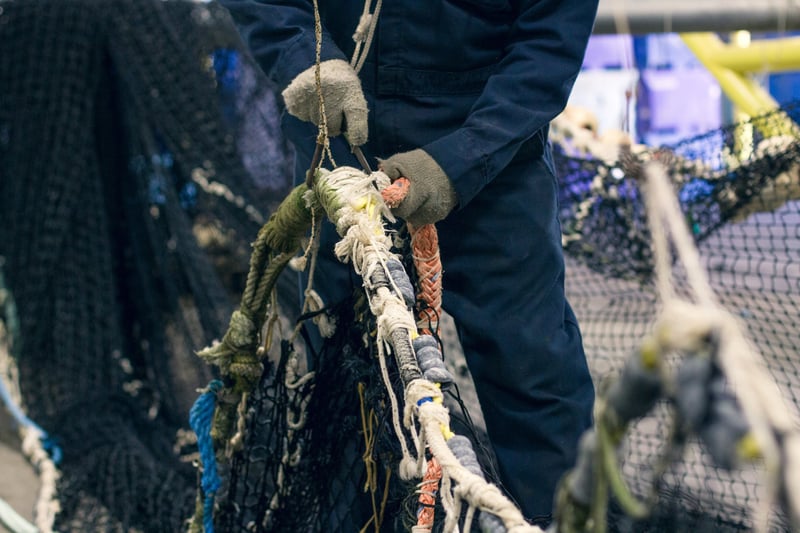
Calling for a dedicated body in Australia to clean up ghost nets in the Gulf of Carpentaria
News
World Animal Protection and the Northern Prawn Fishery call for dedicated body in Australia to clean up ghost nets in the Gulf of Carpentaria.
The Northern Prawn Fishery (NPF) operates off Queensland's north coast and voluntarily removes lost and abandoned fishing nets – ‘ghost nets’ - as part of a partnership with World Animal Protection. However, both World Animal Protection and the NPF agree the fishing industry is not equipped to manage the clean up effort on its own.
The Gulf of Carpentaria in northern Australia has been identified as a global hotspot for ghost nets, with over 2,400 tonnes drifting from Southeast Asia into Australian waters each year. NPF operators are not contributors to this problem and do everything they can to avoid losing gear while fishing.
Members of the NPF collected three large nets during the Gulf's 2015 banana and tiger prawn season (see the video).
NPF Project Officer, Adrianne Laird, said the work saved the lives of turtles, fish and other marine life:
"They were monofilament gill nets, roughly about 30 metres with a drop of 10 metres, and they were all brought in to the port of Karumba.
"They're called ghost nets because they're ghost fishing: they're floating around catching everything and killing a lot of sea life up there.
"I think any removal of nets is significant, even getting one out of the ocean plays a very important role."
Ms Laird said large ghost nets can weigh hundreds of kilograms and in some instances were too heavy for fishing vessels to pull aboard.
When this happens, fishermen have no choice but to leave the nets in the water and hope they wash up on the coast in an area where land and sea rangers can retrieve them.
"We're asking [fishermen] to attach buoys [to the net] to try and keep it afloat and then they give us a position
"For all the nets they have retrieved they give us the position of where they found them, and we report that to World Animal Protection for them to gather that information.
"They can weigh tonnes, so they can't all be retrieved."
World Animal Protection Australia’s Head of Campaigns, Nicola Beynon, said in the past, responsibility for cleaning up the nets was passed back and forth between State and Commonwealth organisations, depending on where the net drifted.
She said the NPF are doing a great job collecting the nets, but it does not have the resources to do the whole job.
"We have been asking the Government to dedicate one central agency responsible for surveying for ghost nets, particularly in the Gulf of Carpentaria, and then responding to reports of abandoned nets at sea and being responsible for recovering them.
"At the moment it’s not clear if the nets are in State or Commonwealth waters, is it the Department of Environment's job, is it the fishery department's job or is it the Navy's responsibility?
"We want one agency clearly identified and given the resources to make it their mission to survey and recover ghost nets from the ocean."
World Animal Protection is part of an expert team advising the Federal Government on priorities for its Marine Debris Threat Abatement plan, which was reviewed last year.
We will continue working with the Government and lobbying for the creation of a dedicated body to manage ghost net collection in the Gulf of Carpentaria.
They're called ghost nets because they're ghost fishing: they're floating around catching everything and killing a lot of sea life up there.